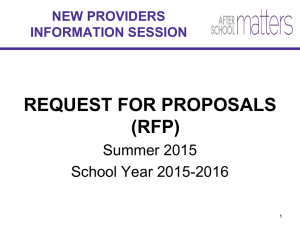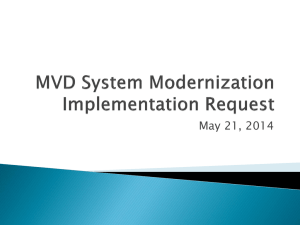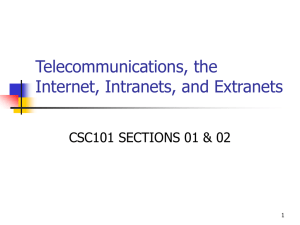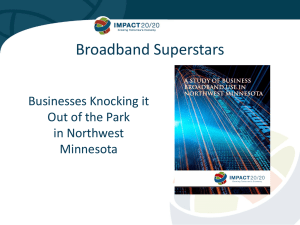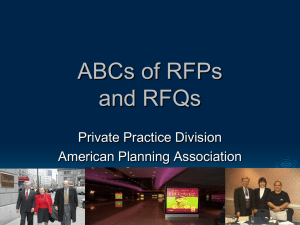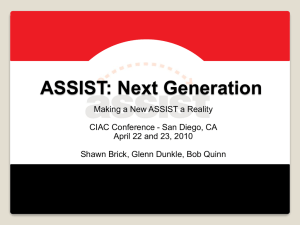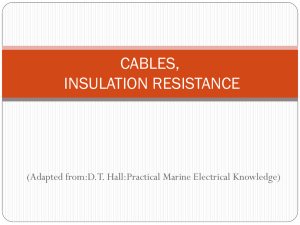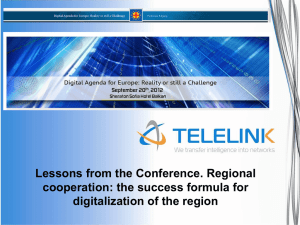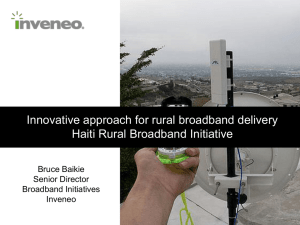Here - Gig.U
advertisement
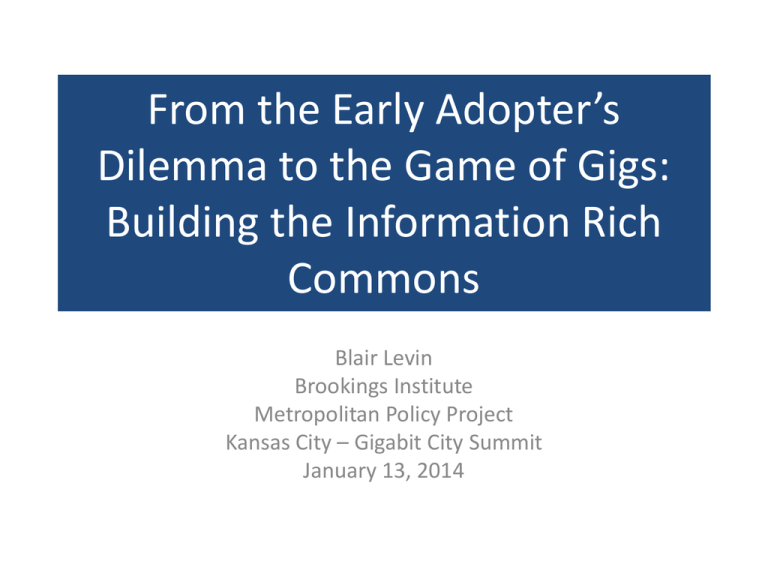
From the Early Adopter’s Dilemma to the Game of Gigs: Building the Information Rich Commons Blair Levin Brookings Institute Metropolitan Policy Project Kansas City – Gigabit City Summit January 13, 2014 The Arc of History You Are Here A Commons in Our Time City Thinking in 1914 What assets would be critical for economic and social progress in the decades ahead? Known • Water? • Electrical? Unknown • Distribution Center? • Airport? • Technology Focused University? The Future Economic value creation, which for several millennium was based on the manipulation and distribution of physical objects, increasingly will be based on manipulating, transporting, and analyzing bits of information. City Thinking in 2014 What assets will be critical for economic and social progress in the decades ahead? Known • Ubiquitous, affordable and abundant bandwidth networks • Device, Sensor and M2M networks that provide actionable intelligence • A digitally ready population and digitally ready city government Tools Bandwidth • Ubiquitous, cheap, smart sensors providing actionable intelligence • Never a constraint to innovation, economic growth, social progress People • A digital ready population • A digital ready city government The Information Rich Commons Devices • The Internet of Things • Open Data • Big Data Networks People • Gigabit Fiber • Muni Wi-Fi • Universal Affordable Access • Digital Readiness • Responsive Government The Information Rich Commons Today’s Focus Devices • The Internet of Things • Open Data • Big Data Networks People • Gigabit Fiber • Muni Wi-Fi • Universal affordable access • Digital Readiness • Responsive Government The Information Rich City Prediction: In Five Years There Will be Two Kinds of Cities Cites with Cable v. Copper Cities with Cable v. Fiber Prediction: In Five Years There Will be Two Kinds of Cities Cites with Cable v. Copper Cities with Cable v. Fiber Housing Early Data: Increases Housing Values The Impact of High-speed Broadband Availability on Real Estate Values: Evidence from United States Property Markets By Molnar, Savage & Sicker University of Colorado, August 15, 2013 Prediction: In Five Years There Will be Two Kinds of Cities Cites with Cable v. Copper Cities with Cable v. Fiber Economic Attractiveness Early Data: Increases Attractiveness as Business Location Prediction: In Five Years There Will be Two Kinds of Cities Cites with Cable v. Copper Cities with Cable v. Fiber GDP Growth Early Data: Increases GDP “Our study suggests that communities where gigabit broadband was widely available enjoyed higher GDP, relative to similar communities where gigabit broadband was not widely available. The 14 communities with widely available gigabit broadband that we studied enjoyed over $1 billion in additional GDP when gigabit broadband became widely available, relative to communities where gigabit broadband was not widely available.” The Early Adopter’s Dilemma: No Map of Path to the New World Two Questions What Networks will Market Forces, Left Alone, Produce? What Have Municipal Efforts To Date Produced? Topics for Today What Networks will Market Forces, Left Alone, Produce? What Have Municipal Efforts To Date Produced? In the Summer of 2009, the National Broadband Plan Team asked CITI to provide a report on all publicly announced broadband deployments for the years ahead The Data was Deadly For the First Time Since the Beginning of the Commercial Internet there was no National Carrier with Plans to Deploy a Better Network than the Current Best Available Network Report suggested, and experience confirmed, current market forces would not drive deployment of world leading wireline networks in the U.S. 25 For 85% of the Country, Cable had the Faster Network and the Cheapest Upgrade Path The Future Looked Like a Cable v. Copper Competition that would be Premised on Allocating Scare Bandwidth Instead of Building on Technological Advances to Deploy Abundant Bandwidth Cable v. Copper Cable v. Fiber Business Model: Allocating Scarce Bandwidth Business Model: Deploying Abundant Bandwidth Consequence for Innovation: Buffering drives desire for higher priced tiers; therefore upgrades follow innovation Consequence for Innovation: Scales to higher levels of video (4k, 8k), thereby upgrades enable innovation of higher performance knowledge exchange. Core Proposition: Harvesting from Past Investment Core Proposition: Future Proof to here? How do we move from here A Way to Understand the Challenge The Prisoners’ Dilemma The Prisoners’ Dilemma The Prisoners Are Both Better Off if They Trust Each Other Not to Confess The Prisoners’ Dilemma The Cops’ Mission is to cause a “Defection” The Prisoners Are Both Better Off if They Trust Each Other Not to Confess The Prisoners’ Dilemma Substitute the Idea of Investing in Next Generation Deployments for Confessing and Harvesting Sunk Costs for Staying Quiet The Prisoners’ Dilemma Cable and Telcos Are Both Better Off if They Trust Each Other Not to Deploy NG Networks The Regulator’s Dilemma How to Cause a Defection? Topics for Today What Networks will Market Forces, Left Alone, Produce? What Have Municipal Efforts To Date Produced? Three Different Drivers Supply Side Driven (Google Fiber v. Incumbents) Small Cities (Federal Money, Market Structure Driven) Demand Side Driven (Gig.U, etc.) Current Math: Returns Do Not Justify the Investment Currently, the private investment equation usually looks like this: Costs Benefits C + O > (1-r)R + SB + (-CL) C – Capital Expenditures O– Operating Expenditures r – Risk R- Revenues SB- System Benefits (Benefits that drive increased revenues outside the communities where the new or incremental investments are made.) CL- Losses due to competition 37 The path forward: change the math C + O < (1-r)R + SB + (-CL) But how do we do that? 38 Key Strategies Use Existing Assets More Effectively Reduce CapEx, OpEx, risk Regulatory Flexibility and Efficiency Reduce CapEx, OpEx, risk Aggregate Demand Reduce risk and raise revenues 39 Tactics within existing powers of communities Reduce Cap Ex • Build to Demand Model • Access to ROWs, Facilities • Reduce Regulatory Time Reduce Op Ex • Access Payments • Reduce Ongoing Regulatory Costs • Utilize Existing Billing Platforms Reduce Risk • Build to Demand • Standardize Functions Across Areas, Vendors Increase Revenues • Demand Aggregation • Marketing Platform • New Services Increase Ecosystem Benefits • Distributed Innovation • Seeding Long-Term Growth 40 Google Starts Spreading Information Commissioned by Google Published 2013 The Unfolding “Game of Gigs” (as of August 5, 2014) Seattle* Denver Sioux Falls Spokane Tucson* Columbia Jefferson City Colorado Springs Albuquerque* Minneapolis - St. Paul Orlando Las Vegas Omaha ** Phoenix* Salt Lake City Portland Provo Winston-Salem* Augusta Dallas Fort Lauderdale Greensboro Jacksonville Houston Miami Oakland Chicago* Cleveland* San Francisco Austin Kansas City Raleigh-Durham* Charlotte Nashville Atlanta* San Antonio San Jose Chattanooga Leverett Longmont Wilson Urbana-Champaign* Gainesville* Burlington Bristol Chanute Blacksburg* Independent Projects*** St. Louis San Diego Los Angeles *Gig.U Community **Note: Cox plans to eventually build a gigabit throughout its footprint, but is starting with these cities. ***Category not comprehensive But what about those communities who are not on Google’s Map? GIG.U FALL 2014 STATUS CHART University Community State Method Status Virginia Tech Michigan State U of Florida U of Louisville U of Kentucky Texas A&M U of NC NC State U Duke U Wake U ASU Georgia Tech U of Chicago Blacksburg East Lansing Gainesville Louisville Lexington College Station Chapel Hill Raleigh Durham Wake-Forest Phoenix Atlanta Chicago Storrs, New Haven, others Columbia Missoula Albuquerque Cham/Urbana Shaker Heights Morganton Seattle Orono VA MI FL KY KY TX NC NC NC NC AZ GA IL PPP PPP Local Utility RFP RFP RFP NCNGN NCNGN NCNGN NCNGN GF GF Legal Reform Downtown Gig Zone Local ISP Offering Innovation Zone Network Built 3 New Entrants Building Gig Networks Pending Incumbent upgrade to Gig Deal with T, Negotiating with GF Deal with T, Negotiating with GF Deal with T, Negotiating with GF Deal with T Negotiating with GF Negotiating with GF Telco Upgrading Network CT State RFP RFP in Process MO MT NM IL OH WV WA ME RFP Study RFP RFP PPP PPP Legal Reform PPP Developing RFP Study Complete; developing response Developing RFP Local ISP Developing Network Pilot Project Spectrum Based Pilot Operational Telco Upgrading Network In Discussions, Spin Off Projects U of CT U of Missouri U of Montana U of New Mexico U of Ill Case Western U of WV U of Washington U of Maine Zone • Cleveland • Beta Block • Blacksburg • Gigabit WiFi Zone • Morgantown • Transit Areas Using White Spaces Zone (Cleveland, Blacksburg and Morgantown) District • Gainesville • Innovation District in Partnership with University, Utility, and Real Estate Developers Zone (Cleveland, Blacksburg and Morgantown) District (Gainesville) Neighborhoods and City • Lansing • Community Strategies • Louisville • RFP with Three Providers • ChampaignUrbana • RFP with Single Provider Zone (Cleveland, Blacksburg and Morgantown) District (Gainesville) Neighborhoods and City (Lansing, Louisville, and Champaign-Urbana) Region • North Carolina NGN • Joint RFP with Six Communities and Four Universities Zone (Cleveland, Blacksburg and Morgantown) District (Gainesville) Neighborhoods and City (Lansing, Louisville, and Champaign-Urbana) Region (North Carolina NGN) State • Connecticut • RFI Organized by Major Cities in which All Communities are Invited to Participate Zone (Cleveland, Blacksburg and Morgantown) District (Gainesville) Neighborhoods and City (Lansing, Louisville, and Champaign-Urbana) Region (North Carolina NGN) State (Connecticut) Key Question for City Officials Are the Networks Serving Your Community Today Sufficient for Ten Years from Now? Three Key Insights 1. Everything that happens in your city ten years from now will be enhanced or degraded depending on the quality of the networks. 2. Many things you are doing today or will do in the next few years will affect the quality of the networks you have ten years from now. 3. Broadband is bought as a community. While Individuals think they make a choice, the choice is predetermined by choices the community makes. 86% of the experts believe there will be “new, unique and compelling technology applications that capitalize on significant increases in bandwidth in the United States by 2025.” Bottom Line Cities with Cable v. Fiber Cities with Cable v. Copper Thank You
